Testing: DJI Phantom 3 Pro Quadcopter Drone
DJI's Phantom 3 is an incredible piece of technology at a really great price, and worth the upgrade from previous models.
Earlier this year, DJI released its third-generation Phantom quadcopter. The Phantom line is perhaps the most well-known ready-to-fly quads you can buy, and the Phantom 3 Advanced and Phantom 3 Professional models are significant upgrades to the last generation. These quadcopters are amazing devices; they combine aerial, sensor, and imaging technologies to make a user-friendly remote-controlled flying camera that would not have been possible a decade ago. That ease-of-use is partly what makes these ready-to-fly quadcopters so compelling. While hobbyists have been building RC multi-rotors for fun and sport, the low barrier to entry offered by RTF quads has exploded the market for new products–not unlike the first years of the modern smartphone. And the rapid pace of DJI’s product iterations, along with the proliferation of quadcopter-produced photos and videos–further bootstraps a fast growing community of new flyers.

So to answer one frequently-asked question: yes, the Phantom 3 line is a significant and worthwhile upgrade to the Phantom 2. Our first Phantom was last year’s Vision+, which amazed us by being easy to fly, incorporating a built-in stabilized gimballed HD camera system, and tying flight and sight together with an integrated FPV video feed. All three of these features are markedly improved in the Phantom 3. Let’s go over the changes in depth.
First, the new flight system. The Phantom 3 looks a lot like the Phantom 2, with only a slightly bigger airframe (it will fit in many existing Phantom 2 cases). But the brushless motors, DJI speed controllers, and 4S battery system that power it under the hood are new, and grant the quad more power. It’s not that the Phantom 3 flies a lot faster than the Phantom 2 (16m/s max speed vs 15m/s max) or can ascend and descend quicker; that power manifests itself as improved stability and control during flight. Unlike DJI’s Inspire 1, the Phantom 3 doesn’t fly like a hovering tank–it feels nimble and responsive, even when taken to heights where the motors are fighting winds. And that’s power you can take for granted–it wasn’t until I switched back to the Phantom 2 for a day that I realized how rock solid the new quad is by comparison.
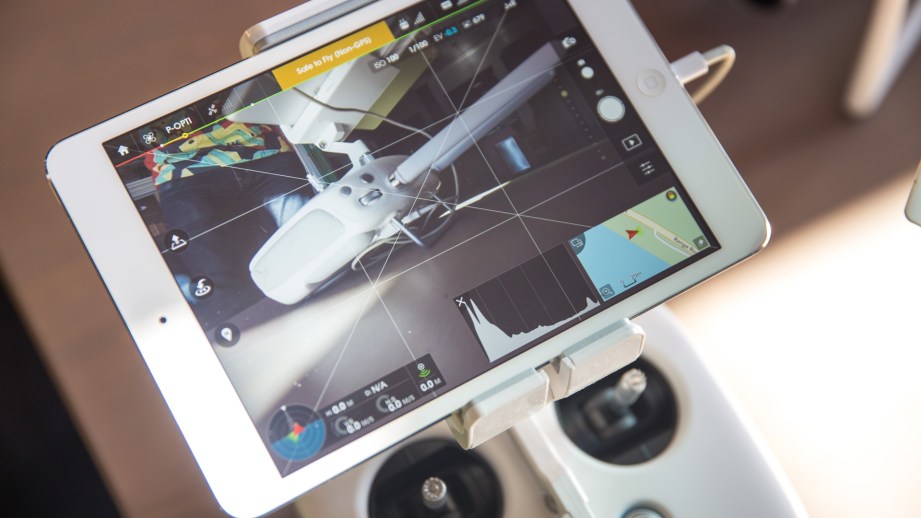
Key to the Phantom’s flight system is GPS-stabilization. In the Phantom 2, this allowed the quadcopter to calculate where it should be in positional space, automatically adjusting its motor power in real-time to compensate for external forces. We’ve demoed this before by dragging a flying Phantom by its landing struts to simulate wind and feeling the motors “fight back”. Phantom 3 taps into both GPS and Russian GLONASS satellites for a wider range of coverage, though that accounts for faster satellite acquisition moreso than increased positional accuracy. More notable is the Phantom 3 Advanced and Professional’s (I’ve been testing the latter) use of an ultrasonic and visual positioning system for low-altitude stabilization. This is the same system that was introduced in the Inspire 1–a combination of sonar and downward-facing camera to stabilize the quad when it’s lower than 10 feet above ground. This is tech that other RTF quads simply don’t have.
Another feature unique to DJI that has made its way from higher-end models to the Phantom 3 is Lightbridge video streaming. In the previous Vision+, FPV video from the onboard camera was streamed to a receiver over Wi-Fi–hence the use of a Wi-Fi extender for an effective range of about 300m. The Wi-Fi system worked, but required a clumsy setup process before each flight and operated over an unprotected signal. Lightbridge is DJI’s proprietary wireless data system for 720p/30 HD video transmission. Still 2.4GHz, but with an effective range of a 1KM and works through some obstacles. The digital video quality is simply fantastic over Lightbridge and while latency of about a quarter of a second isn’t as immediate as an analog video broadcast, is still responsive enough for aerial filming. As with all camera-enabled quads, flying by direct sight of the vehicle is always recommended, and a spotter to keep an eye on the quad is a must.

Finally, the integrated camera is dramatically improved in the Phantom 3 over the Vision+. Still mounted on a motorized three-axis gimbal, the camera now records via a 12.4MP 1/2.3″ Sony EXMOR sensor like the one on the Inspire 1 (similar to what you’d find in a high-end smartphone). GoPro doesn’t say who makes the sensor in its Hero 4 camera, but teardowns of previous models have revealed Sony sensors; it’s very likely that the camera here is the same as the one in a new GoPro. But sensor doesn’t tell the whole tale, and the optics in the Phantom 3 are new a well. The lens here is a 20mm full-frame equivalent, so it shoots photos and video with a 94-degree field of view. That’s still technically wide-angle, but it’s not like the ultra-wide 140-degree FOV found in the Vision+. By comparison, GoPro 4’s cropped “narrow” FOV setting is 90-degrees.
The camera system is actually what differentiates the Advanced and Professional models of the Phantom 3. While both use the same sensor and can take 4000×3000 RAW photos, the $1250 Professional model has enough video processing power to shoot 4K video (4096×2160 25fps max), while the $1000 Advanced is limited to 1800p 60fps max. The camera design looks identical on both models, so unless the video encoder chips are different, this is likely an artificial limitation to segment the models. The same 1080p settings on both models should produce the same footage–I would recommend the Advanced model if you can’t benefit from editing 4K video. DJI also just announced an $800 Phantom 3 Standard model with no Optical Flow stabilization or Lightbridge video, but strangely with a camera that can record 2.7K video.

The new Phantoms also get access to the awesome DJI Pilot app, which we first saw in use with the Inspire 1. Like on the Inspire, the app runs on a tablet that gets data from the transmitter over a physical USB cable, not Wi-Fi. It’s so much better than the phone app we used on the Vision+: higher resolution interface with detailed on-screen telemetry, camera controls, setting adjustments, map overlays, flight logs, and the ability to stream video directly to YouTube. The two higher-end Phantom 3 models also come bundled with a new transmitter that has buttons and dials for manual camera control, like exposure comp., vertical panning, and shutter trigger. No more having to touch the tablet screen mid-flight to work the camera–you can keep both hands on the flight sticks and still be a capable photographer.

As the lineup stands, the Phantom 3 Standard is only a minor step-up from the Vision+, the Advanced and Professional models leap ahead in capability, and the Inspire 1 still at the high-end with a beefier flight system, transforming formfactor, two-axis camera control, and two-transmitter piloting. That $2900 quad is really the only one that deserves the Professional moniker.
My experience of flying the Phantom 3 Professional shows that its spec improvements aren’t paper-thin. It’s simply a joy to fly, and rewards you for practice. Getting it up in the air and back on the ground is simple with automated on-screen controls, and even new flyers will be able to perform simple pans and glides within their first flight. Training your fingers to execute maneuvers like circles and stable figure eights requires more practice, but the experience is always satisfying because the quad behaves predictably. I was never frustrated by the quad not doing my thumbs told it to do–a testament to the speed controllers’ responsiveness and power delivered by the 4S battery. Lightbridge video worked from several hundred meters away, rarely breaking up as long as the quad was in my visual line of sight. The transmitter range is even longer, so I still had control of flight even when the Lightbridge connection started weakening due to distance.

After a dozen flights, that worry in the back of my head that the Phantom could fall out of the sky at any moment was all but gone–I had no fear of flying it over trees or lakes on a recent trip through the Canadian Rockies. That doesn’t mean you can’t be careless with the Phantom, or any other quadcopter. As we’ve discussed on Still Untitled and in past articles, the low barrier to entry of RTF quads can give a false sense of security. These are powerful pieces of technology that shouldn’t be treated like toys. Owning one, even before you fly it, automatically shoulders the responsibility of learning the regulations and best practices for flying both legally and safely. We’ve covered some of those best practices in this guide.
Indoor flight is another story, and I’m still wary of flying the Phantom 3 in an enclosed space. The Optical Flow system works and will keep it relatively stable when the Phantom can’t detect satellite signals, but it’s a backup measure best used for low flight outdoors and automated landing assistance. It’s not that I don’t trust the Phantom to keep stabilized indoors–I’m more worried about the unpredictability of obstructions and other moving objects (like people) in an enclosed environment. Different situations yield different risks; I’d be comfortable hovering the Phantom 3 in a large warehouse to film an aerial shot, but not flying it at home, for example.

Flying is fun in its own right, but the Phantom 3 is really an aerial photography and videography tool–a smartphone camera you can fly through the sky. The quality of its video is constrained by the payload capabilities of the quad–multi-rotor builders who’ve built Octos that can hold full-frame cameras are going to be able to shoot higher quality and more versatile shots. Video here is very comparable to a GoPro 4–compressed h.264 footage that maxes out at 60mpbs at 4K. That’s not bad at all, and definitely higher quality than what YouTube will compress 1080p and 4K videos at. But looking closely at 4K footage, I did notice compression blocking, especially in scenes with lots of foliage and trees. Low-light quality on the camera is much improved from the Vision+, with shots that look less grainy and discolored. I don’t recommend flying the Phantom 3 at night, but exposure control means that you can shoot some really nice golden hour video.
(A note: you’ll need a fast microSD card for local recording, but the Phantom 3 Professional includes a very good class 10 16GB Lexar card. 16GB should be good enough for 30 minutes of 4K footage, which is more than you’ll be able to record on a single flight. But media management is a must, as the data adds up pretty quickly).

A built-in camera has a lot of innate benefits, like a wholly integrated video streaming system and direct camera control mid-flight. But a third-party camera like a GoPro–despite using very similar sensors–gives videographers slightly more post-processing options. GoPro can record flatter video that can then be tweaked in its Protune software, and can output cleaner 4:2:2 video over HDMI to an external recorder (if you can mount one on a quad). That gives video editors more space to color grade in post. With the video encoded by the Phantom 3’s camera system, there’s only so much you can do in Premiere to grade and fix exposure.
Another limitation of this kind of built-in camera is what kind of motion you can film. The settings let you control framerate (eg. 24fps vs 30fps) and shutter speed, but matching that shutter to an ISO setting to get cinematic motion (eg. 1/50s for 24fps) is tricky since the camera doesn’t have any built-in ND filters. You can of course buy an ND filter accessory to mount over the lens before flight. Photos, however, are another story since the Phantom 3 can save RAW images. You can shoot directly at a sunset and tweak the picture in Lightroom to turn out a beautiful shot. Despite the 4K capability, I’ve honestly had more fun with photography on Phantom 3 than videography.
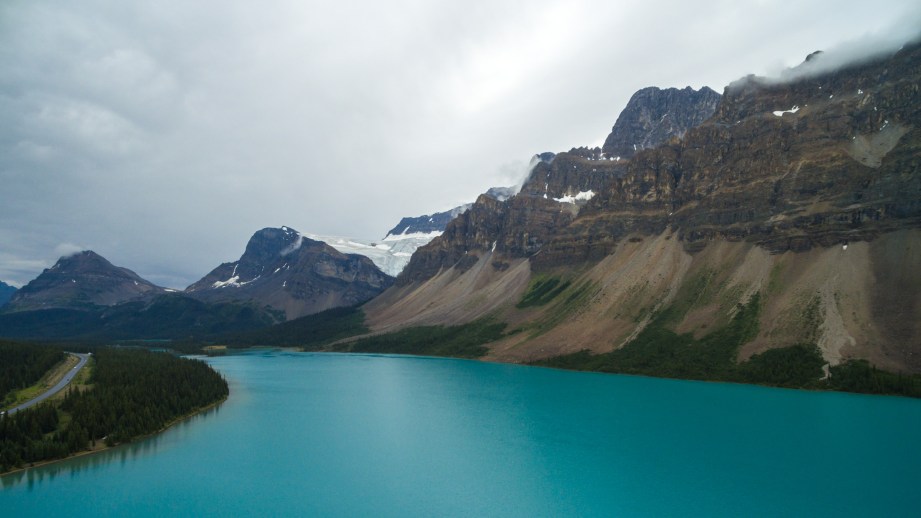
Imaging quality aside, the Phantom 3 and other camera-equipped quads force videographers to consider the potential and limitations of this kind of aerial platform. Flying a Phantom 3 may be orders of magnitude easier than flying a helicopter, but aerial cinematography is complicated. You have to think about how the camera moves and what kind of perspective is captured holding a camera up 250 feet in the area. Unlike a Steadicam operator, controlling a camera on a flying quadcopter only gives you so much control over the physical positioning of the camera platform. Of the six axes of movement, you only have direct access to four (no roll or pitch, though pitch is simulated with gimbal vertical panning). Adding to the challenge, those four axes of control respond to commands with various degrees of sensitivity and latency. In practice, that means it’s difficult to get a graceful up/right/yaw combination to spiral the camera around a subject, at least without lots of trial and error.
Another hard limitation is the focal length of the camera, which sets its field of view. Think about your typical iPhone, which has a 35mm equivalent lens. You can buy lens attachments like the Olloclip to simulate a wider or narrower focal length–that’s how filmmakers use iPhones to shoot telephoto-like shots. No such lens attachments are available for the Phantom 3’s camera. Combined with a focus set to infinity, this explains why so many quadcopter videos all look so similar. You need variation in camera hardware to expand on the language of aerial films.
DJI claims 20 minutes of flight time for the Phantom 3’s battery, which is in line with my testing. And while 20 minutes is a long time for flying, it’s actually not that long for video production. You really only get 16 to 18 minutes of airtime before needing to bring the quad back home, which may be enough time for one or two good shots. Getting the “camera” in position takes more time than the actual filming. The new battery also isn’t compatible with the Phantom 2’s 3S smart batteries, so they’ve been in high demand since launch.

As a video camera platform, the Phantom 3 is really best suited for a few types of shots. The stationary aerial shot. Panning. Long tracking shots. Pulling Back. Pirouettes. The cinematic lexicon of multi-rotor mounted cameras is still somewhat limited, especially when you’re constrained to one axis of camera panning. So as a camera tool, the Phantom 3’s footage is best used to complement more traditional video, as opposed to standing alone. You also quickly learn that even the slightest of movements can ruin tracking shots. Slow drifts from the flight or nudges to transmitter sticks can break up the kind of smooth movement viewers expect from aerial videos. (An advanced yaw-lock setting helps.) It may be more practical to take on aerial cinematography as an experienced videographer learning to fly, rather than a RC pilot who wants to make films.
Soon after the release of the Phantom 3, DJI also released a new SDK for app developers. The SDK allows for the creation of apps that control both camera and flight, such as the Autopilot app. From developer reports, it’s much more functionality than was previously granted in the Phantom 2 SDK, which is a good thing, since features like the ground station waypoint system didn’t make it into the new models. DJI seems to be letting the developer community build in those features in third-party apps. With 3D Robotics touting many automated and assistive video-centric flight tools in its Solo quadcopter, Phantom users have to wait for apps to fill those holes.

We’ve said it numerous times, but it bears repeating: the Phantom 3 and other ready-to-fly quadcopters aren’t toys. If you think you’re in the market for a quadcopter and have never flown one before, buy a smaller one to fly first for fun and learn the mechanics of two-stick multi-rotor control. The same is the case if you’re a photographer or videographer who’s never flown a quadcopter–learn on a micro quad first, and then consider what type of photos and videos you want to get from a $1000 investment. If you’re an RC hobbyist who wants a quad purely for flying and performing aerial tricks, you should probably learn to build your own quad and tune it. But if you have experience in both RC and photography/videography and are ready for this class of product, DJI’s Phantom 3 is an incredible piece of technology at a really great price, and worth the upgrade from previous models.
5 thoughts on “Testing: DJI Phantom 3 Pro Quadcopter Drone”
Leave a Reply

One Day Builds
Adam Savage’s One Day Builds: Life-Size Velocirapt…
Adam embarks on one of his most ambitious builds yet: fulfil…

Show And Tell
Adam Savage’s King George Costume!
Adam recently completed a build of the royal St. Edwards cro…
All Eyes On Perserverance – This is Only a Test 58…
We get excited for the Perserverance rover Mars landing happening later today in this week's episode. Jeremy finally watches In and Of Itself, we get hyped for The Last of Us casting, and try to deciper the new Chevy Bolt announcements. Plus, Kishore gets a Pelaton and we wrack our brains around reverse engineering the source code to GTA …
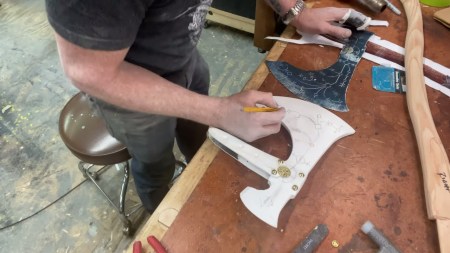
Making
Adam Savage in Real Time: God of War Leviathan Axe…
Viewers often ask to see Adam working in real-time, so this …

One Day Builds
Mandalorian Blaster Prop Replica Kit Assembly!
Adam and Norm assemble a beautifully machined replica prop k…
House of MCU – This is Only a Test 586 – 2/11/21
The gang gets together to recap their favorite bits from this past weekend's Superb Owl, including the new camera tech used for the broadcast and the best chicken wing recipes. Kishore shares tips for streamlining your streaming services, and Will guests this week to dive into the mind-bending implications of the latest WandaVision episod…

One Day Builds
Adam Savage’s One Day Builds: Royal Crown of Engla…
One of the ways Adam has been getting through lockdown has b…

Making
Adam Savage Tests the AIR Active Filtration Helmet…
Adam unboxes and performs a quick test of this novel new hel…
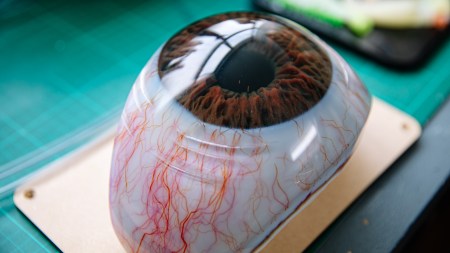
Making
Weta Workshop’s 3D-Printed Giant Eyeballs!
When Adam visited Weta Workshop early last year, he stopped …

One Day Builds
Adam Savage’s One Day Builds: Wire Storage Solutio…
Adam tackles a shop shelf build that he's been putting off f…













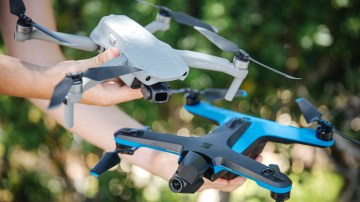







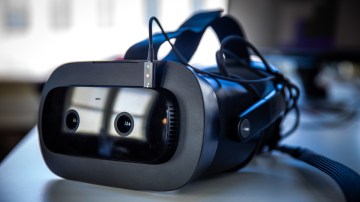




Nice summery and review.
Do you have a model recommendation for newbies who want to build up to this one?
The Hubsan x4 is considered one of the better small ones to start off with.
Amazon also have plenty of spare parts, batteries and props.
Excellent review, Norm! 👍 👏
No, Crashes is part of the learning curve. The Phantom -3 repairable is very high!! For learning fly and camera technique start with good used Phantom 1 or 2 – lower cost and easy repair. Then move up and the cross-over is good.